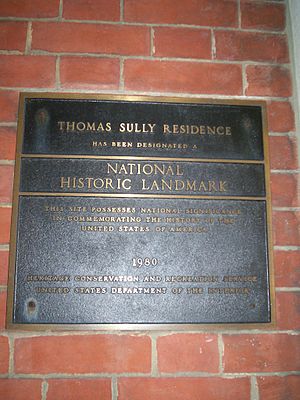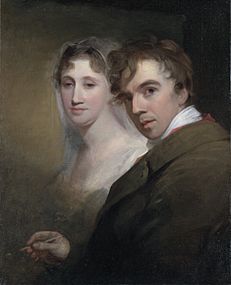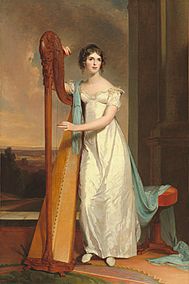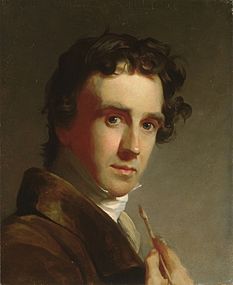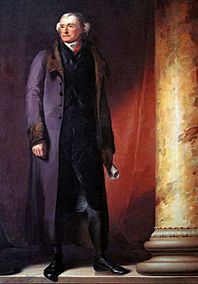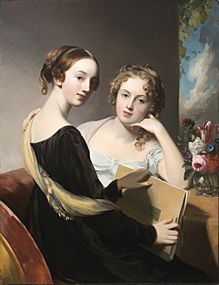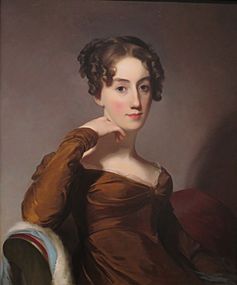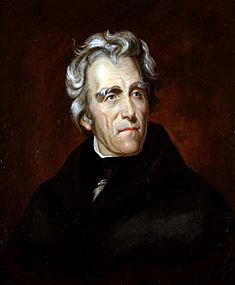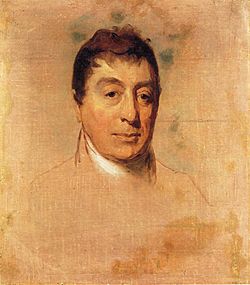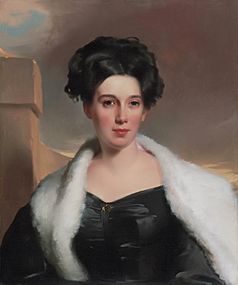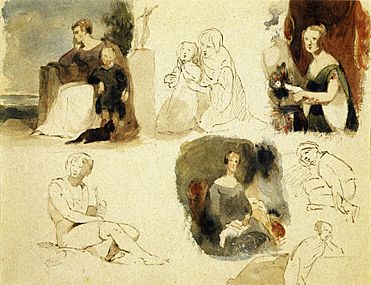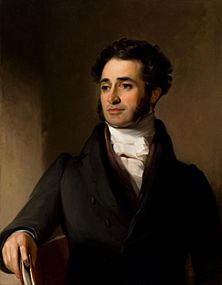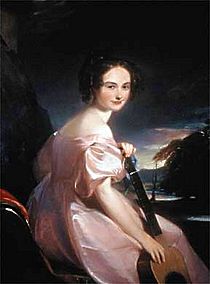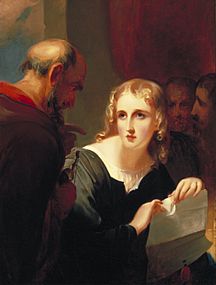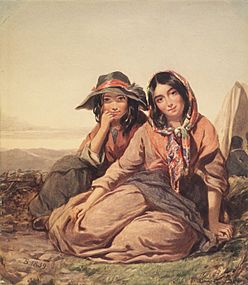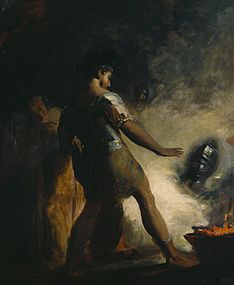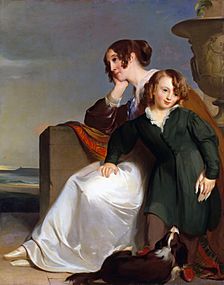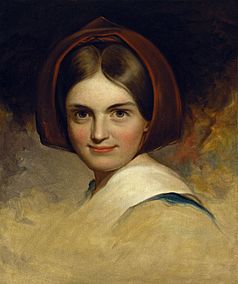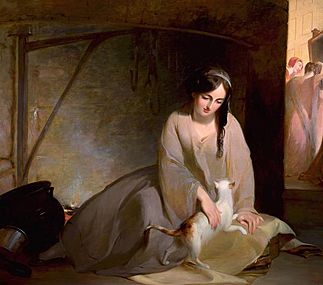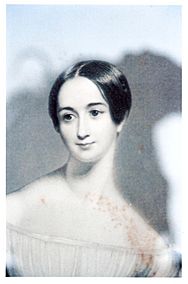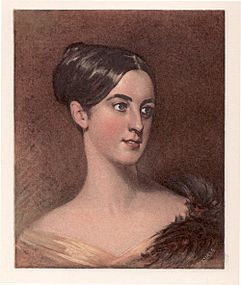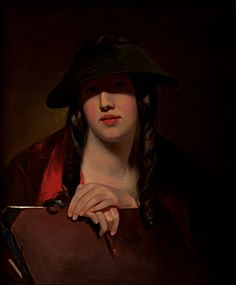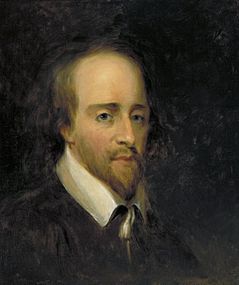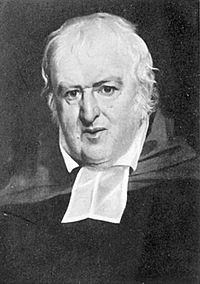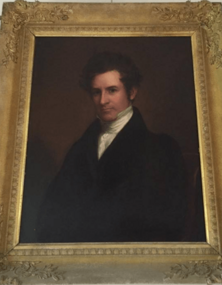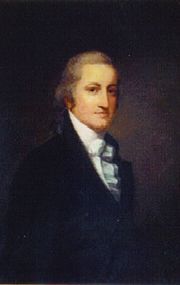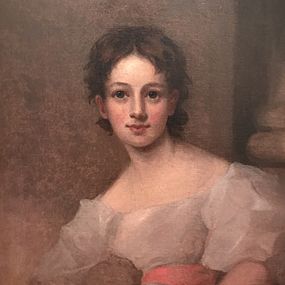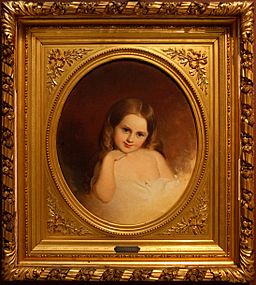Thomas Sully facts for kids
Quick facts for kids
Thomas Sully
|
|
|---|---|
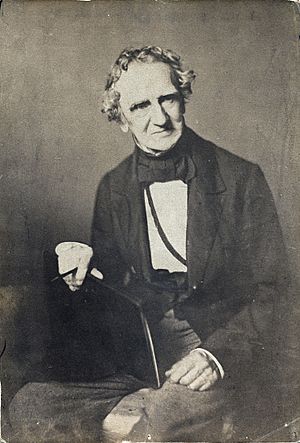
Sully in 1869
|
|
| Born | June 19, 1783 |
| Died | November 5, 1872 (aged 89) |
| Occupation | Painter |
| Signature | |
 |
|
Thomas Sully (born June 19, 1783 – died November 5, 1872) was a famous American artist. He was known for painting portraits of people. Even though he was born in Great Britain, he lived most of his life in Philadelphia, Pennsylvania, in the United States.
Sully painted many important people. These included US presidents like Thomas Jefferson, John Quincy Adams, and Andrew Jackson. He also painted Marquis de Lafayette, a hero from the American Revolutionary War. Besides portraits, he painted landscapes and historical scenes. One of his most famous historical paintings is The Passage of the Delaware from 1819. His artwork was even used for designs on United States coins.
Contents
A Painter's Life
Early Years
Thomas Sully was born in Horncastle, Lincolnshire, England, in 1783. His parents, Matthew Sully and Sarah Chester, were actors. In 1792, when Thomas was nine, his family moved to Charleston, South Carolina. His uncle, Thomas Wade West, ran a theater there.
Thomas first performed in the theater as a tumbler when he was 11. A tumbler is someone who does acrobatic tricks. After a short time working for an insurance broker, who noticed his art skills, Thomas started painting around age 12. He learned from his brother-in-law, Jean Belzons, who painted tiny portraits called miniatures. They stopped working together in 1799. From 1801 to 1802, Sully lived in Norfolk, Virginia. His aunt, Margaretta Sully West, ran her theater and opera company in that city.
Becoming a Professional Artist
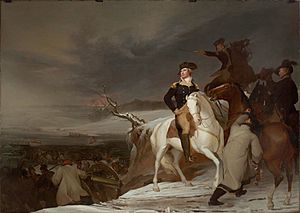
Thomas Sully became a professional painter in 1801 when he was 18. He was living in Norfolk, Virginia, with his older brother Lawrence at the time. By 1802, Thomas and Lawrence moved their art business to Richmond, Virginia. In 1805, Thomas married Sarah (Annis) Sully, who was his brother Lawrence's widow. He helped raise Lawrence's children.
Sully moved to New York in 1806. The next year, he spent three weeks in Boston learning about portrait painting from another famous artist, Gilbert Stuart. By 1808, Sully settled in Philadelphia. He lived there for the rest of his life. In 1809, Sully traveled to London for nine months. He studied art there with the American painter Benjamin West.
Sully became very well-known after he painted portraits of John Quincy Adams in 1824. Adams became president later that year. He also painted General Marquis de Lafayette, a French hero who helped America in its revolution. Sully's portrait of Adams is in the National Gallery of Art in Washington, D.C. Many important Americans of that time had Sully paint their portraits.
From 1837 to 1838, Sully was in London again. He was asked to paint Queen Victoria for a society in Philadelphia. His daughter, Blanche, helped him by wearing the Queen's clothes when the Queen was busy. One of Sully's paintings of Thomas Jefferson is at the University of Virginia. Another full-length painting of Jefferson is at West Point. His portrait of General Alexander Macomb is also there.
In Philadelphia, Sully taught portrait painting to Marcus Aurelius Root. Root later became a very successful photographer, known for daguerreotypes.
Sully's records show he created 2,631 paintings starting from 1801. Most of these paintings are now in the United States. His painting style was similar to that of Thomas Lawrence. Even though he was best known for portraits, Sully also painted historical scenes and landscapes. A famous example is The Passage of the Delaware from 1819, which is now in the Museum of Fine Arts, Boston.
Family Life
Thomas and Sarah Sully had nine children together. Some of their children were Alfred Sully, Mary Chester Sully, Jane Cooper Sully, Blanche Sully, Rosalie Sully, and Thomas Wilcocks Sully. Mary Chester Sully married another painter, John Neagle, who was taught by her father.
Awards and Connections
Sully was one of the people who helped start The Musical Fund Society in Philadelphia. He painted portraits of many musicians and composers who were also part of this group. In 1835, Sully was chosen to be a member of the American Philosophical Society, a famous group that promotes knowledge.
Later Years and Legacy
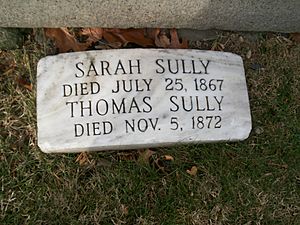
Thomas Sully passed away in Philadelphia on November 5, 1872. He was buried in Laurel Hill Cemetery.
After he died, a book he wrote called Hints to Young Painters was published.
His paintings are now shown in many of the world's top art museums. Two of Sully's portraits hang in the meeting rooms of student societies at the University of North Carolina. He was asked to paint portraits of important former students from these groups, including President James K. Polk.
Sully's artwork also influenced the design of US coins. The front side of the United States Seated Liberty coinage, which was used from 1836 to 1891, was based on his work. In 2013, Sully's painting Portrait of Anna and Harriet Coleman was sold at an auction for $145,000.
His son, Alfred Sully, became a brigadier general in the Union Army during the American Civil War. Thomas Sully's family tree includes other notable people. He was the great-grandfather of Ella Deloria, a famous writer and expert on the Yankton Dakota people. He was also the great-great-grandfather of Vine Deloria, Jr., a Standing Rock Dakota scholar and author of Custer Died For Your Sins (1969), a book about American Indian civil rights.
Thomas Sully was also the great-uncle of Thomas Sully (1855–1939), who was a well-known architect in New Orleans.
One of his students was Charles Henry Lanneau of South Carolina. Lanneau also became a portrait painter and an artist during the Civil War.
During World War II, a Liberty Ship called SS Thomas Sully was named in his honor.
Gallery of Works
-
Lady with a Harp, 1818, a portrait of Eliza Ridgely, now at the National Gallery of Art.
-
Portrait of the Artist, 1821, at the Metropolitan Museum of Art
-
Portrait of Thomas Jefferson, 1821, at West Point
-
Portrait of the Misses Mary and Emily McEuen, 1823, at the Los Angeles County Museum of Art
-
Portrait of Elizabeth McEuen Smith, 1823, at the Honolulu Museum of Art
-
Portrait of Andrew Jackson, 1824, used for the United States twenty-dollar bill
-
A Life Study of the Marquis de Lafayette, around 1824–1825
-
Sheet of figure studies, 1830–1839, at the Museum of Fine Arts, Boston
-
Jared Sparks, 1831, at the Reynolda House Museum of American Art
-
Portrait of Fanny Kemble, 1834
-
Portia and Shylock, 1835
-
Gypsy Maidens, 1839, at the Brooklyn Museum
-
Macbeth in the witches' cave, 1840, at the Folger Shakespeare Library
-
Mother and Son, 1840, at the Metropolitan Museum of Art, New York
-
Elizabeth/Elise Wadsworth, wife of Sir Charles Murray
-
Portrait of Shakespeare, 1864, at the Folger Shakespeare Library
-
Portrait of Rev. John Andrews D.D. Provost of University of Pennsylvania
-
John Tayloe III, a copy by Thomas Sully from an original by Gilbert Stuart
See also
 In Spanish: Thomas Sully para niños
In Spanish: Thomas Sully para niños


